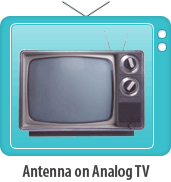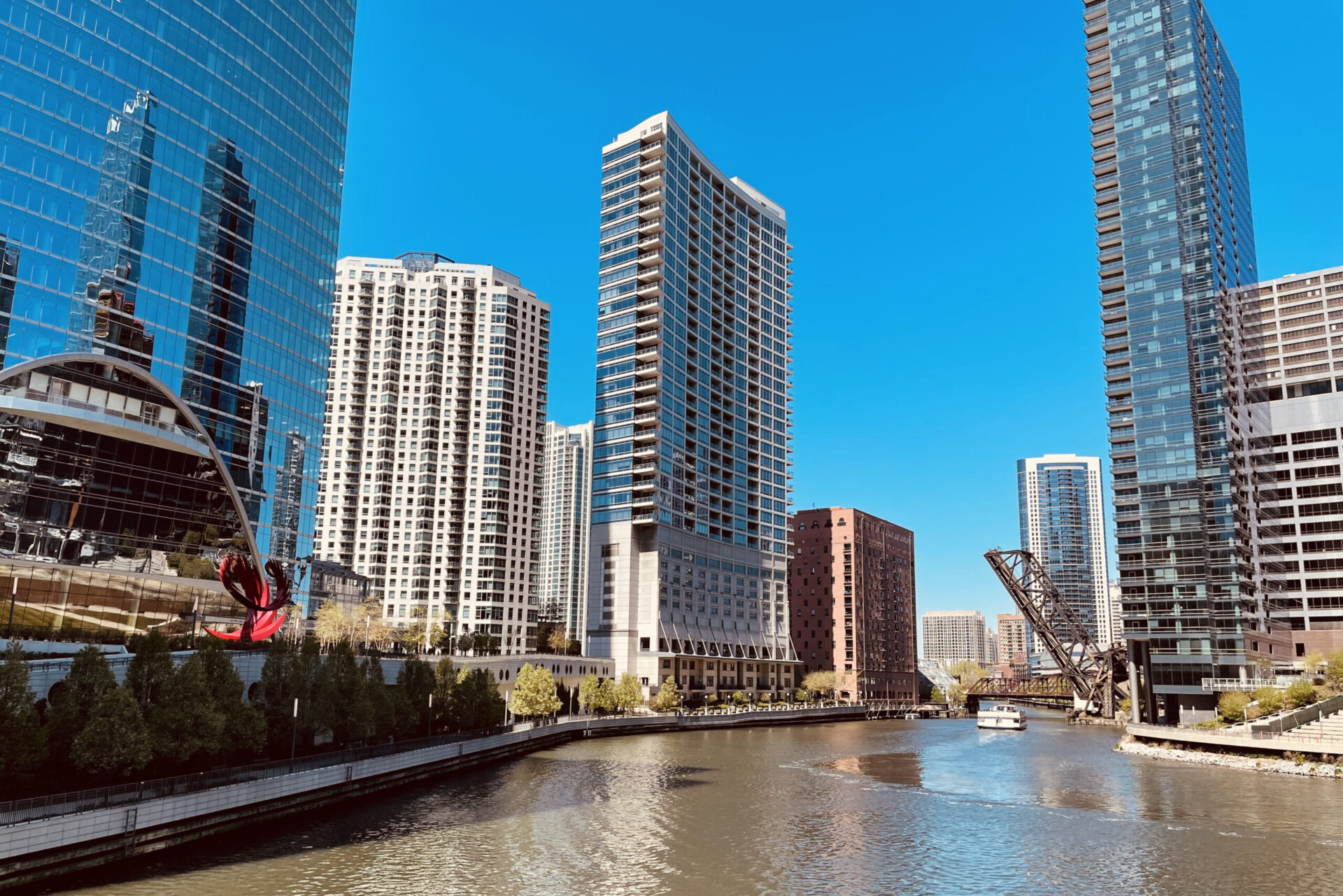
With the advent of the Digital Television Age, I decided to take the government up on its TV Converter Box Coupon Program. This is the program where each household gets up to two $40 coupons towards the purchase of a digital TV converter box: you wire the box between your antenna and the TV, and voila— digital TV.
Now, I’ll admit to being a geek, which led to my installing a new TV antenna on my roof when we moved into our new house last year. Okay, it wasn’t all geekiness– I also wanted to be able to give the cable company the boot in case I got tired of their rate hikes and (potential) lousy service (we do have cable TV, but I use the antenna for my PC TV recording, as discussed here.). Since we live about 20 miles from downtown Chicago, where all the TV transmitters are, we get a pretty good signal on the ol’ analog Toshiba (which, by the way, is about 5 years old).
Digital TV, however, is a vast improvement over analog. When I installed the Insignia NS-DXA1 converter I picked up at Best Buy this weekend, my eyes and ears were treated to– dare I say it– a whole new viewing experience. The picture is incredibly sharp, and some of our local stations, like the main PBS channel, have multiple sub-channels with different programming that aren’t made available to regular cable subscribers.
Setup was very easy: plug the antenna cable into the box, plug the audio/video jacks into the TV (some models, like this one, have a regular “Antenna Out” jack that you would connect to your TV’s antenna jack, just like the old days of VCRs), plug in the power, and fire the box up. It automatically tuned in all the available digital channels in under 5 minutes, and I was up and running. The box is very simple to operate, and the remote is very straightforward.
One of the most frustrating things about Digital TV (or DTV) is that until recently it’s been very difficult to get straight answers about what all this terminology means. People tend to mix DTV up with HDTV, which is incorrect. Hopefully, this will help anyone who’s looking for answers.
DTV (Digital TV): the method by which nearly all over-the-air TV stations will be broadcasting come February of next year. Digital broadcasting gives TV stations the ability to broadcast multiple channels at once, usually defined as channels 26-1, 26-2, etc. DTV is not to be confused with HDTV.
ATSC: the type of tuner in a TV set which is capable of receiving DTV.
HDTV: a special type of high-definition service which brings better video and audio to the viewer. HDTV is a special kind of high-resolution service that you can get when you get DTV, but not all DTV is HDTV. You need a special HDTV receiver and display to get the full HDTV experience.
Do the digital converter boxes pick up HDTV signals? Yes, but they don’t output high-definition content. If I tune in an NCAA game on our local CBS station, they’re sending out an HD signal, but my converter box is reworking that signal so I can watch it on my analog Toshiba. The picture is very good– better than the analog signal I can still pick up– but since I don’t have a true HDTV setup I won’t get the highest resolution. And that’s fine with me– frankly, we don’t watch all that much TV anyway.
So, if you still receive your TV signal through an antenna and you have an analog (pre-2004, mostly) TV, you’ll want to take advantage of the free/$40 coupon program. My coupons– they’re actually more like gift cards– arrived about a month after I ordered them, and were accompanied by a list of stores near me that carry coupon-eligible converter boxes, including Best Buy, Wal-Mart, and Radio Shack. All of these places carry converter boxes in the $40-$60 range.
For more info on the program and the switchover to DTV, go to www.dtvanswers.com. In the meantime, I’ll be watching a program about Ireland on WTTWD-11.1.
Update 3/22/08: The previous owners of our home left a TV antenna in the attic, so I ran a cable to the TV in our bedroom and picked up this Magnavox converter box from Wal-Mart for $49.87. It’s 10 bucks cheaper than the Insignia model from Best Buy, but it does pretty much the same job. The main difference is that it seems to want to “sync” with the signal every time you change the channel. Also, I can’t seem to get the CBS station (WBBM-TV channel 2) because of a weak signal. I’ll have to climb back into the attic to see if I can remedy that.
